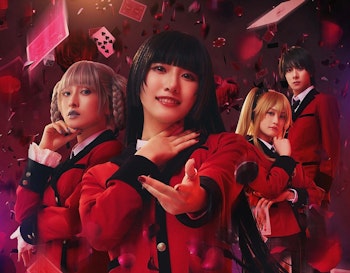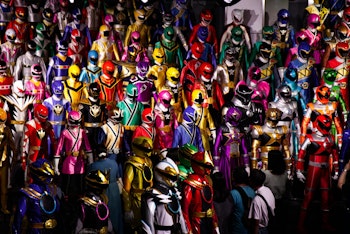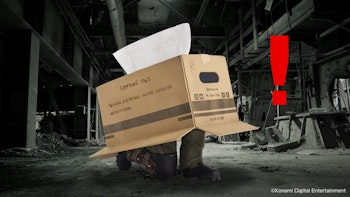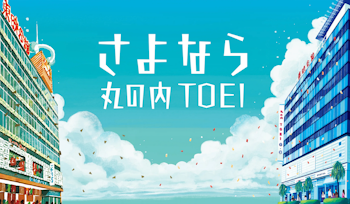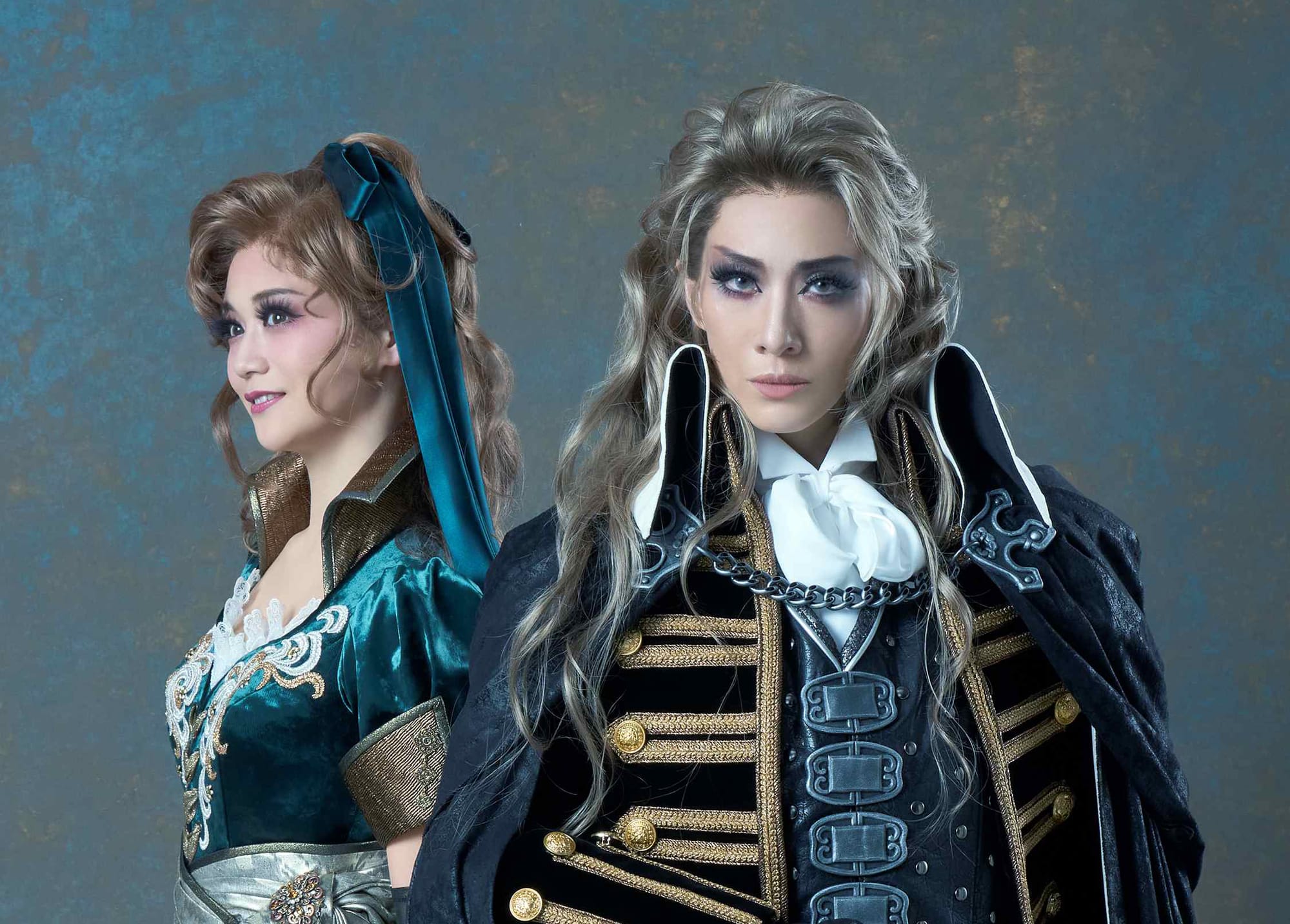
The Takarazuka Revue is one of the most culturally significant theater groups in shaping Japan’s 20th and 21st century theater scene. It is also notoriously difficult for intrigued newcomers to experience the all-female theater troupe for the first time. Tickets are difficult to acquire unless you’re already a fan, and there’s a large history that isn’t necessarily important to understand for a person who solely wishes to enjoy a few hours of musical theater, but is relevant in shaping how the troupe operates. That being said attempts are nonetheless trying to make the troupe accessible to new audiences, including branching out to adapt popular IP.
Proof of this audience initiative in action, the Takarazuka Revue are currently collaborating with Konami to adapt their famed Castlevania series for the stage, with performances getting underway earlier this month. Those new demographics interested in seeing their first show all share a few common questions: how does someone actually get tickets to see the show? What is the experience like attending a Takarazuka Revue performance? How can you get the most enjoyment out of your day? And is this musical take on Castlevania any good?
But first, an introduction.
While we briefly spoke about the Takarazuka Revue in our introduction to musical theater earlier this month, it’s worth noting that the Revue consists of five named troupes who each perform a rotating set of shows, both at their main theaters in Takarazuka City in Hyogo Prefecture and Tokyo as well as smaller theaters around the country. Castlevania: Awakening in the Moonlight, a one-act musical accompanied by a romantic revue called I Love Revue, is one of the shows performed at the group’s larger theaters by the Hanagumi troupe. What makes the group unique is that they’re an all-female troupe with performers who take on male and female roles, known as otokoyaku and musumeyaku respectively.
For their primary main theater performances, shows first begin in Takarazuka at the Takarazuka Grand Theater before transitioning to the Tokyo Takarazuka Theater. Thus, Castlevania will run in Takarazuka until July 20th before performing in Tokyo from August 16th until September 28th.
Buying Tickets
There are multiple methods of securing tickets for Takarazuka Revue tickets, though it remains a difficult process due to the high demand for most shows.
For already-converted fans, it’s possible to apply for numerous lotteries through the official Takarazuka Revue Tomo no Kai fanclub in the months leading up to a show’s debut. Otherwise, tickets are typically available on general sale through the official website in the weeks leading up to a show, unless the show is at a partner theater where these tickets will often be sold through their own websites. A few tickets for some (but not all) main theater performances are kept aside exclusively for audiences without a Japanese passport, often made available a few days following a show’s general sale.
It is generally easier to secure tickets in the Takarazuka theater rather than in Tokyo, due to location and the fact this is a larger theater hosting 2,550 seats, versus Tokyo’s 2,079 seats. Yet beyond ease of access, it’s worth trying to attend a show in Takarazuka not just due to the city being the home of the troupe but because shows will typically perform here prior to reprisal in Tokyo. Plus, the city and theater host many amenities that transform a theatrical performance into a full-day experience.
Visiting Takarazuka City
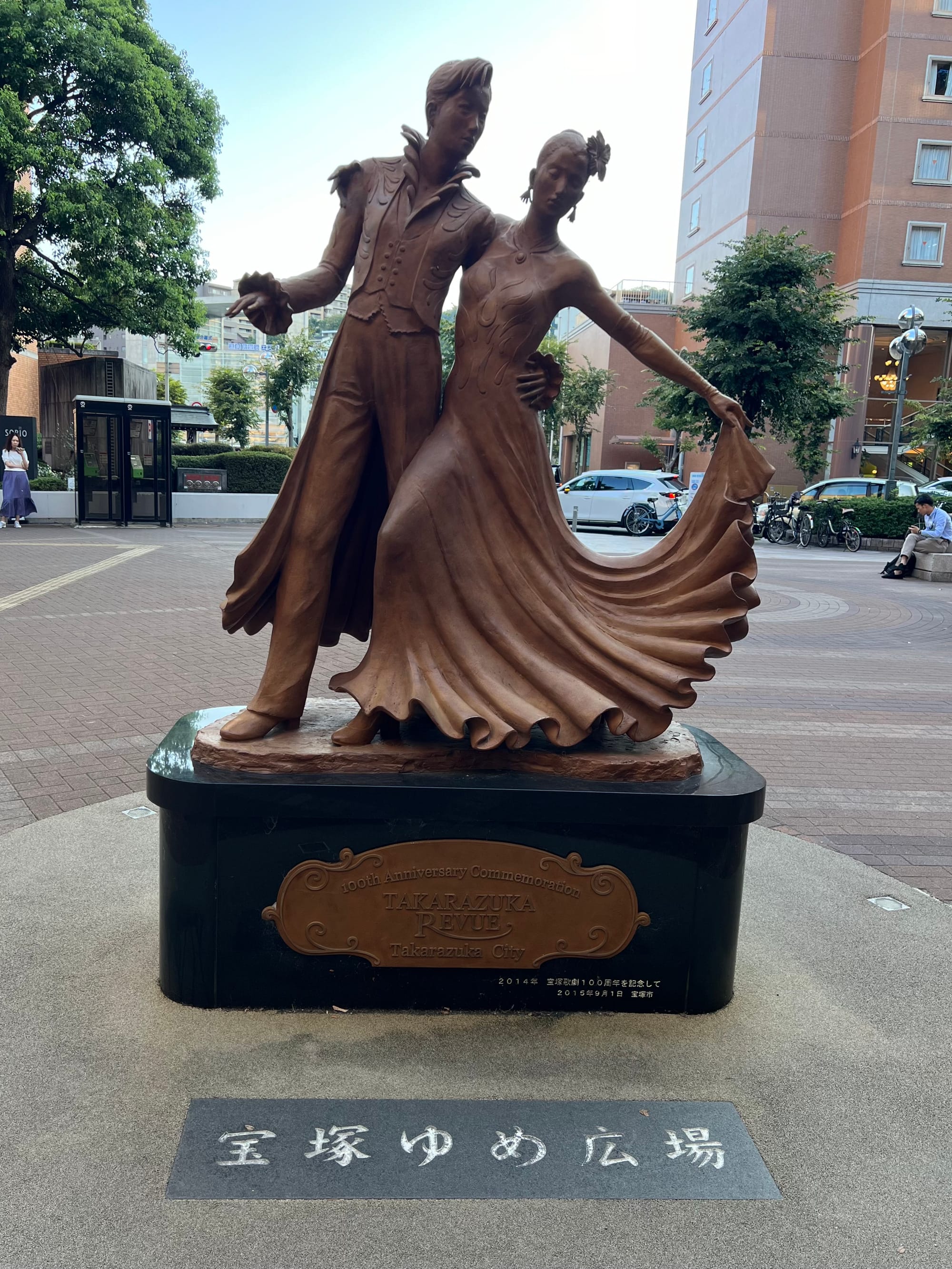
While initially the theater and troupe were founded in Takarazuka City by Hankyu Railways’ Ichizo Kobayashi to create a tourist attraction for the end-of-line station on the network, the city today revolves and reverberates around the traffic that comes to and from the theater. The result is a city where the presence of the troupe can be felt almost everywhere.
Exiting the Hankyu Railways station in Takarazuka, a statue marking the troupe can be found outside the station. Shops will display posters for past and upcoming shows, many of which are signed. The nearest cafe to the theater, Kanya Coffee, will regularly run special drinks themed after the shows being performed. There’s the Hankyu-operated Takarazuka Hotel, and much more.
Away from the Takarazuka Revue the city also plays host to the Osamu Tezuka Museum, but even here there are links - one of Tezuka’s most beloved series, Princess Knight, is inspired by his experiences watching Takarazuka performances.
What to expect from a show
Many Takarazuka Revue performances consist of a one-act musical alongside a revue, although occasionally they will instead perform two-act musicals typically (but not always) concluded with a shortened revue. These musical performances will be most familiar to those attending a performance for the first time. Typically, one-act musicals performed by the troupe are original productions, based on internally-crafted stories or popular IP. Recent examples include an adaptation of the Indian movie RRR, or the original stories of Robin the Hero, Angelic Lie, or Razzle Dazzle.
Sometimes, the troupe will produce their own original two-act musicals also. This includes shows like Casino Royale, based on the James Bond story of the same name, and many performances of their most well-renowned musical, Rose of Versailles. They will also occasionally license two-act musicals and perform these at both their larger theaters and at touring theaters around the country, including popular shows Me and My Girl, 1789, Elizabeth, and Guys and Dolls.
Revues, having otherwise fallen out of favor in the theatrical landscape globally, are intrinsic to the identity of Takarazuka Revue. These can be simplistically described as cabaret-style music-driven mood pieces, typically an hour in length, with a more established structure for which each revue will adapt its overarching thematic idea to support.
Often beginning with a full-troupe performance to the main theme song of the revue, the show will then transition between a number of different sequences that expand on its core theme using a mix of classical, licensed and original music. Within its runtime will be a kickline similar to that of The Rockettes, a dance featuring all the otokoyaku, a duet dance featuring the top otokoyaku and musumeyaku similar to ballroom, and a finale parade where all the stars will descend a large staircase to take their bows.
Revues are defined by grand showmanship, bedazzled costumes and spectacle, and though often devoid of a core story in place of a more thematic journey are often a joy to watch.
At the Takarazuka Grand Theater, there’s more to do than just seeing a show
Let’s assume you secure a ticket to see a show at one of the Takarazuka Revue main theaters for their biggest performances, such as the ongoing Castlevania: Awakening In The Moonlight and I Love Revue show by the Hanagumi troupe. How does the theatrical experience differ to a typical musical theater performance? Quite notably, actually, particularly in Takarazuka city itself.
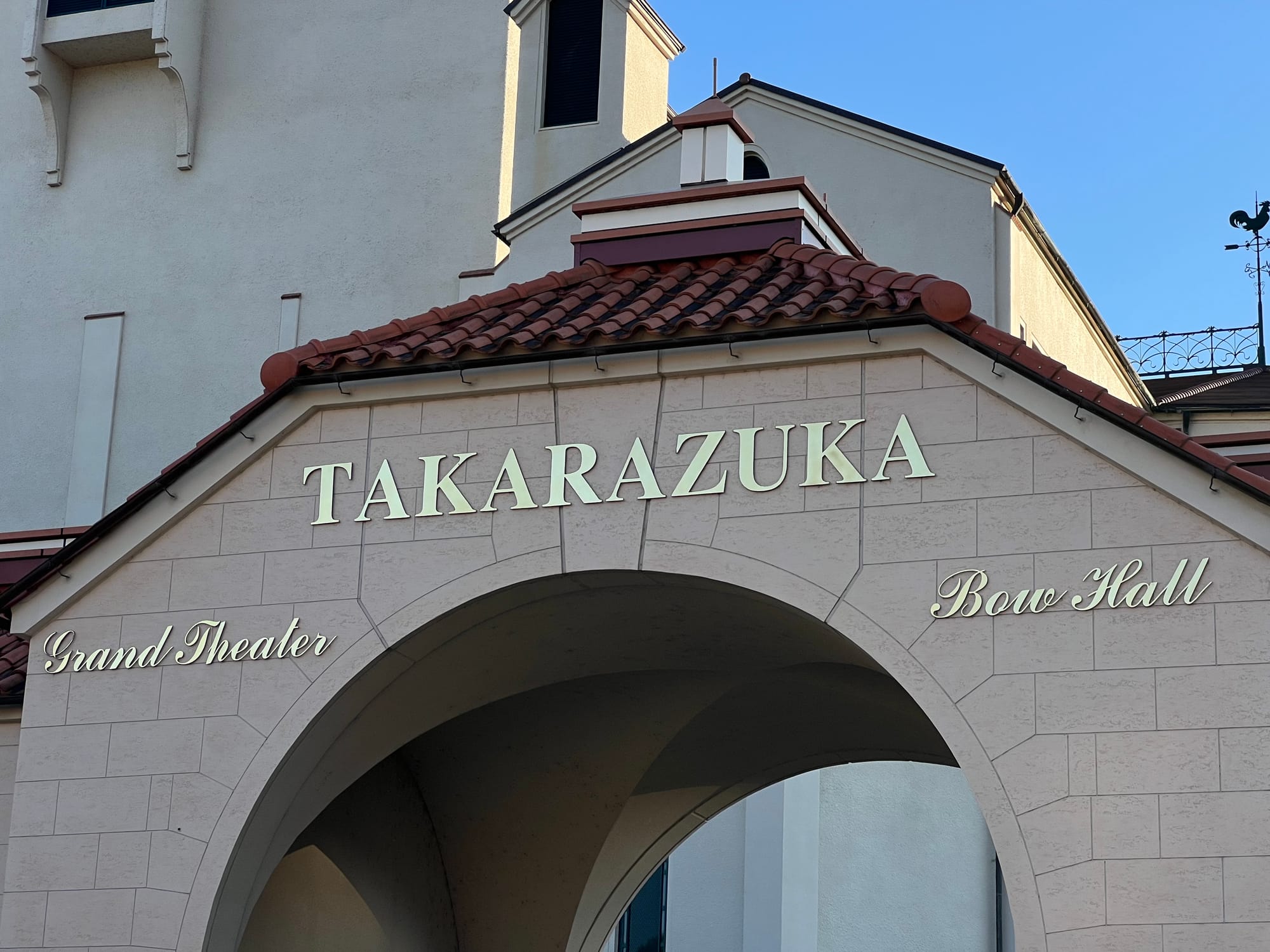
If you attend a show in Tokyo, the more central location of the theater results in a smaller building without the same amenities found in their home city. There is still a shop and bar selling food themed on the performance in question, but the space is a limiting factor. The Takarazuka Grand Theater, meanwhile, includes a number of exclusive activities that embrace the history and present of the troupe, turning a 3-hour musical experience into a full-day activity with more than just a gift shop offering official recordings of recent performances, merchandise and programs.
The building itself is large, with European-inspired architecture that looks more at home in Spain than Japan. Once entering inside, alongside a smaller 500-person theater known as the Bow Hall, are multiple exclusive Takarazuka-themed stores and numerous restaurants. Fleur is a Western-inspired lunch restaurant serving set lunches and desserts themed to both the troupes and the show being performed. Make your way to the theater during the Castlevania run and enjoy a set meal featuring the ‘Heart Skewer’ (a meal including chicken karaage with blood-colored caijun spices on the side).
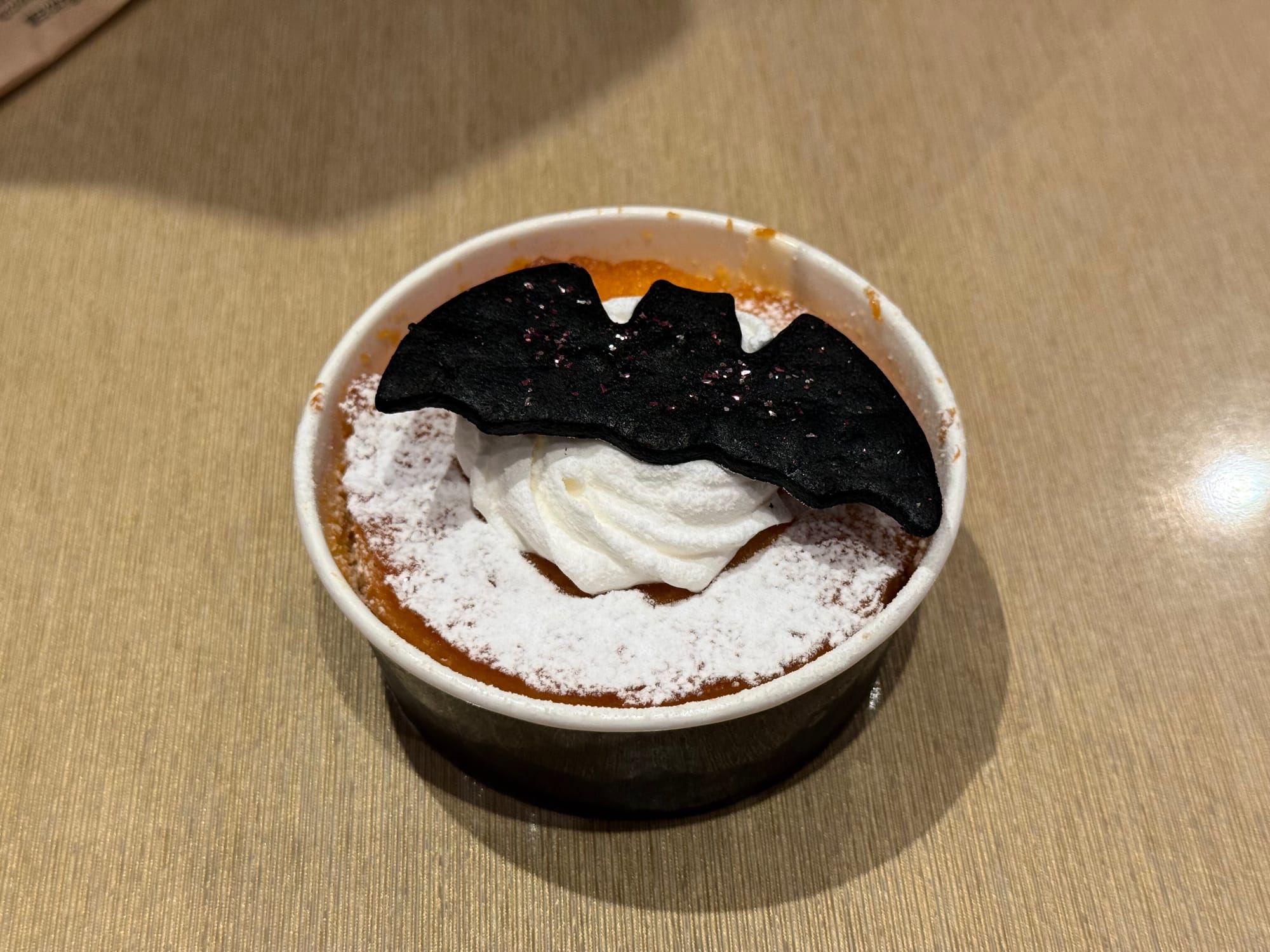
Bonheur is an ice-cream store selling themed and standard ice creams, and there’s even a Japanese-inspired restaurant called Kusunoki. Often having traveled from Tokyo to see a performance at this theater and sometimes out of tradition I find these a fun way to embrace the theming and experience of attending the show. It’s fun to commune with friends or other fans for a bat-inspired cake between acts, especially when they’re reasonably priced, and it can, if nothing else, pass the time before a show or between acts.
The Salon de Takarazuka, though expensive and requiring advance reservation often over a month in advance, is a fun way to imagine yourself as part of the troupe by taking photos wearing a costume from some of the most iconic performances from across the years. With makeup and styling to match the face-melding skill of the makeup used by the performers, it’s an expensive memory but a fun one to have.
Yet one of the most fulfilling experiences of attending a show in this theater in advance is finding time to visit the Takarazuka Hall of Fame. This small two-floor museum inside the theater is dedicated to exploring the history of the revue. On the first floor are various exhibits dedicated to some of the most important performers and off-stage directors, charting the history through historical artifacts going as far back as makeup sheets from the 1930s, to the performers, costumes and set-pieces that have defined Takarazuka Revue’s 111-year history.
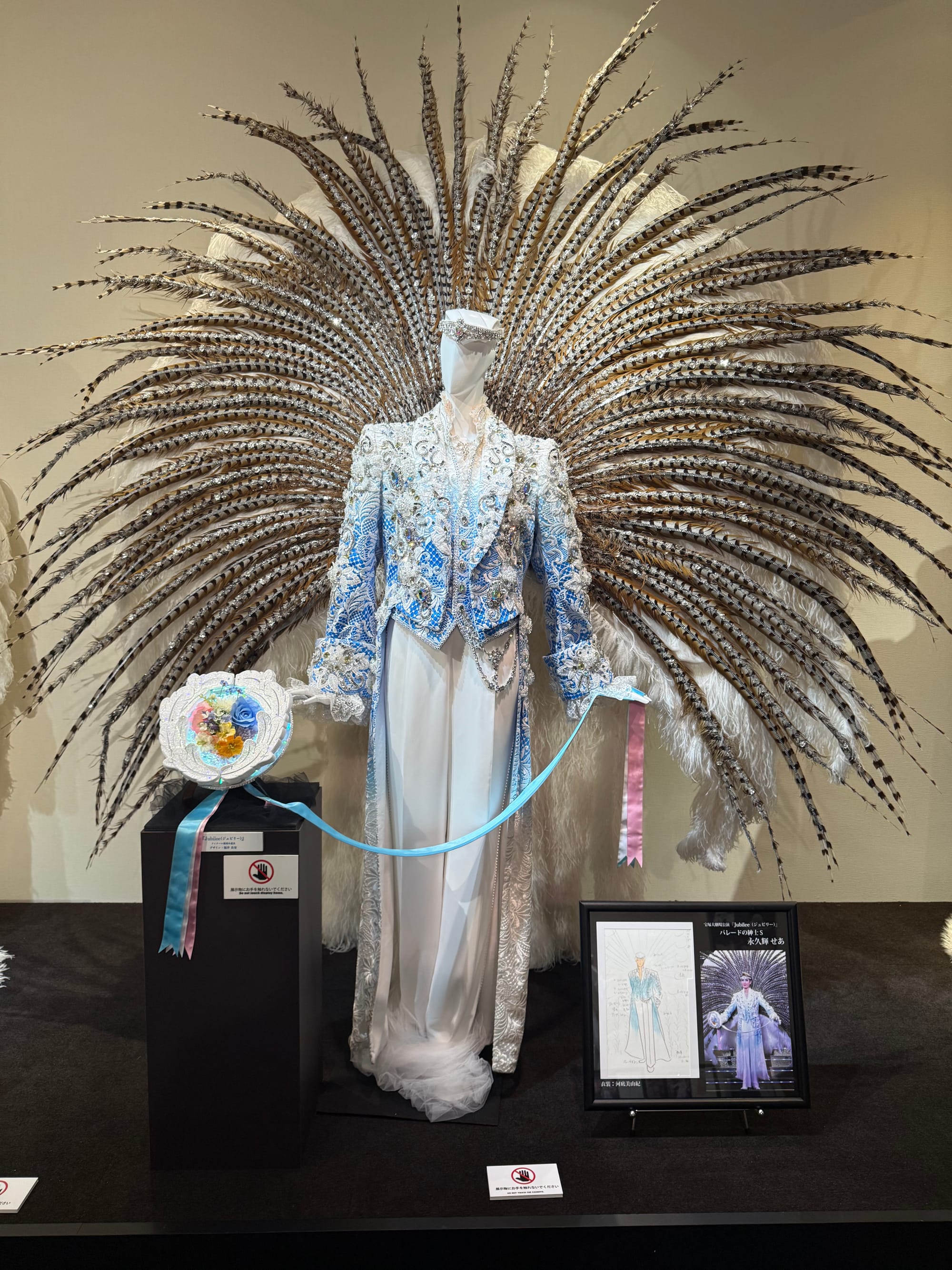
Trek to the second floor, and you can find a more contemporary look at Takarazuka in a rotating exhibition showcasing recent costumes from shows featuring the currently-performing troupe at the theater. While the first floor is strictly off-limits to photography, here fans are free to snap close-up shots of costumes from recent shows, or pose with the grand feathers worn by the top star during the revue finale.
It brings a new appreciation to the artistry necessary to bring these shows to life, especially considering the props and costumes of the top stars on display here are only a fraction of what is needed to outfit a troupe of 80 performers for every show.
Are Castlevania: Awakening In The Moonlight and I Love Revue any good?
You’ve bought your merchandise, enjoyed some food, and seen the history of the Takarazuka Revue. Now you’re ready for the show itself. Recently interest has been peaked by those initially unfamiliar with the Takarazuka Revue thanks to their decision to adapt Konami’s Castlevania franchise for the stage, but is it worth making a trip to the theater to see this show? It certainly is.
Although Castlevania: Awakening in the Moonlight is promoted as an original take on the franchise, the story itself and its characters fit closely to the mold set by its most famous entry, Castlevania: Symphony of the Night. Dracula (Yuma Kizuki) has risen many times to threaten humanity over the years, most recently just five years before the events of the show where he was defeated by Maria Renard (top musumeyaku Misaki Hoshizora) and Richter Belmont (Asuka Seino).
During the years of the French revolution in Paris, the priest of darkness Shaft (Towa Mineka) and many other vampires including Magnus (Raito Kinami) and Succubus (Daiya Yuki) have recovered their strength and are using their powers to help bring back Dracula. Meanwhile Alucard (top star Towaki Sea), born of Dracula and a human woman and who has lived secluded from the rest of civilization in the woods for centuries, has come to realize his fate is to forever stand against his father while conflicted on whether it’s really worth saving humanity from his wrath. It’s in meeting Maria that he begins to find reasons to fight.
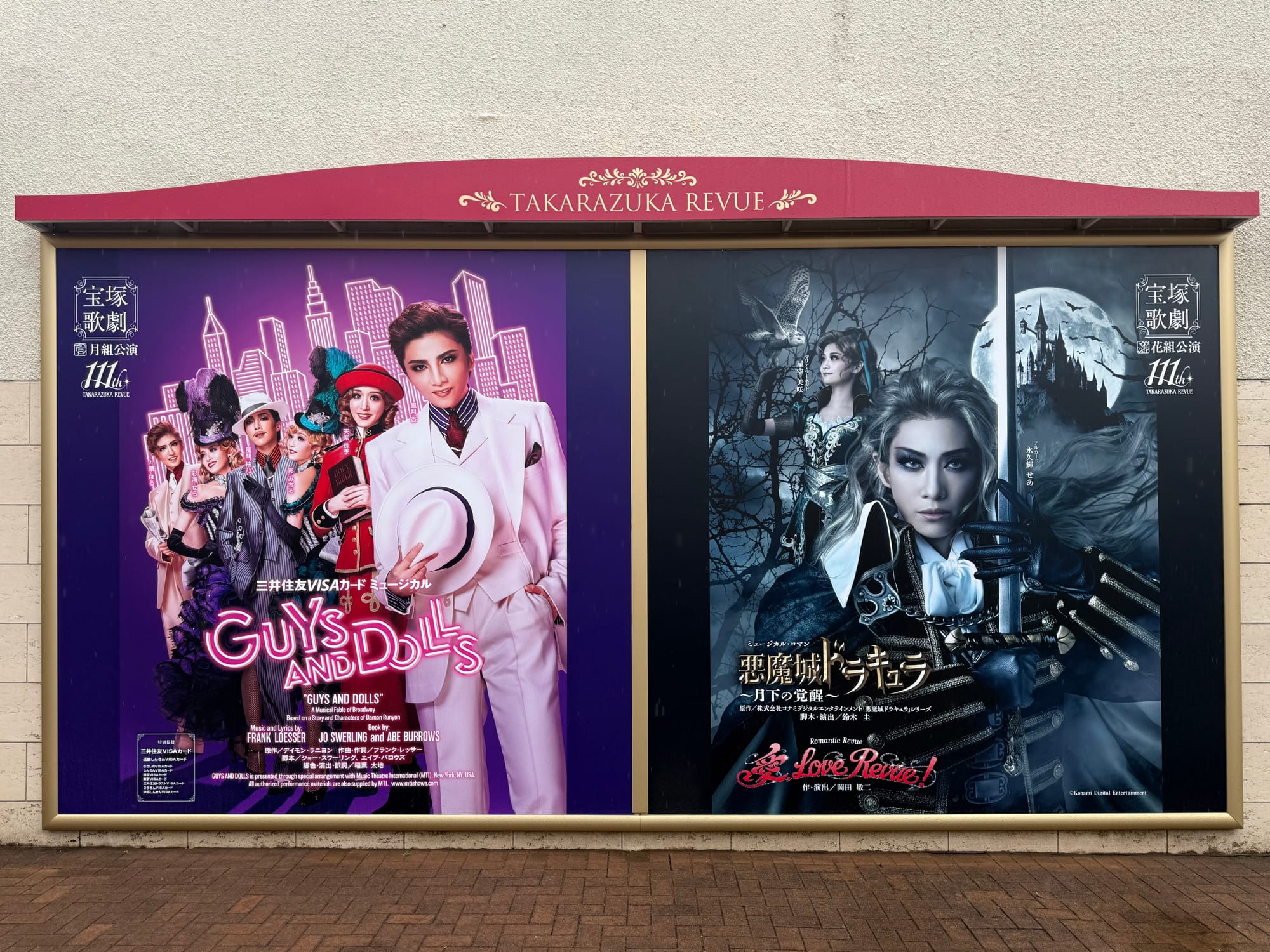
While Takarazuka is not immune to shows about the supernatural or even vampires, you would initially assume the larger-than-life concepts of Castlevania are far more suited to gaming than the limitations inherent to portraying these ideas on stage. Richter Belmont uses his whips with a lavish flair that stretches conventional physics, even before you discuss Maria’s power to summon animals in battle or the abilities of the various vampires in the series. With action, more than story, core to Castlevania’s identity, it’s difficult to know how to create both a faithful tribute to series fans while making it fun for even the uninitiated to enjoy.
Following a rather hectic introduction establishes its revolutionary French setting, the many secondary characters, Maria and Richter’s ongoing battles with Dracula, and Alucard’s internal conflicts, the story slows down as it finds its core focus for the remainder of its 95-minute runtime. As Alucard and Maria meet, our story narrows in on their burgeoning feelings as they team up against Dracula, and seek the dismantling of the vampire order.
What allows the show to succeed is a willingness to embrace the unreality of its gaming origins. Unusual to many Takarazuka Revue but a growing part of musical theater in Japan and around the world is the use of screens to augment the visual landscape of the show. Translucent LCD panels allow the creative team to bring the game’s magical powers to life. This highly action-packed show blends strong choreography, especially from Asuka as she wields Richter’s whip with impressive precision, with these screens for dynamic action complimenting a boss rush-like structure enhanced by music and romance.
While at times these fights can risk breaching the fine line between grandiose and appearing crass and out-of-place on such a grand stage, they’re mostly charming. Alongside an economical use of perspective and a clear desire to embrace the stereotypes of these characters by all the actors (with specific praise deserved for the impact Daiya’s Succubus makes in such a limited runtime), it never takes itself too seriously while ensuring proper respect for the source and the Takarazuka lineage.
Songs in Castlevania are a mix of all-new tunes made for this performance and familiar songs from across the franchise with all-new lyrics. Game songs like "Bloody Tears" and "Lost Painting" are given new life as rallying cries and love songs between Alucard and Maria. It all comes together for a show that packs surprising emotion and charm into its runtime, a natural fit for the troupe.
It’s likely many visiting Takarazuka to see this Castlevania performance will be watching the Revue perform for the very first time, and in this case I Love Revue is the perfect revue to compliment the show and introduce newcomers to this extravagant side of the historic troupe. As a Romantic Revue it takes use of elaborate sets to enhance the emotions of the music used in its performance,
Since revues are often defined by their spectacle, they’re simple to follow and appreciate by anyone, and it’s a stage that allows the performers to showcase both their singing prowess and their dance. As a young couple meet underneath the tree outside their old-time university, they pirouette like ballet stars. In one number, the otokoyaku perform a large co-ordinated dance to the tune of Aleph’s Bad Power that feels like a grand showcase of the drill-like synchronicity and unique allure of these women performing as otokoyaku.
It contrasts the prior musical for an enthralling three hours of theater, ensuring an unforgettable day immersed in this stage and its grand staircase.
This is part of what has made Takarazuka Revue appealing and enduring. From the fans you can meet, to a legacy steeped both in Japanese, music and theatrical history, to the stars themselves and the allure of how they play with gender and presentation and the theatricality of the stage within their performances.
The shows are often great. But for those who seek to learn more, there’s an enriching world to uncover below the surface. For an introduction to all sides of Takarazuka Revue and as an invitation to learn more, Castlevania and I Love Revue are a wonderful entrypoint into this unique aspect of Japanese musical theater.
